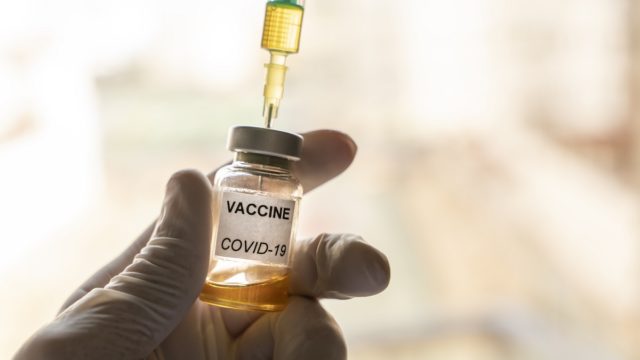Special Report: Messenger RNA vaccines like the ones being developed by Moderna Inc and Pfizer/BioNTech have the potential to rapidly speed vaccine development – but there are a number of potential issues with the approach.
Around the world, people are hoping for a safe and effective coronavirus vaccine that could tame the pandemic and bring life back to normal.
Since early results could be released within weeks of two clinical trials of messenger RNA (mRNA)-based vaccines, Stockhead caught up with Dr Andrew Coley, the head of Innovation at Australian biotech company Exopharm (ASX:EX1) to talk us through the unproven but promising vaccine technology.
The first vaccines
The body’s immune system is very powerful – but it’s just not that intelligent. Vaccines try to provoke the body’s response to pathogens through a variety of ways – but all are ultimately trying to generate a protective immune response, Dr Coley says.
What’s considered the first vaccine was created by English country doctor Edward Jenner, who in 1796 inoculated a young boy with pus from cowpox blisters to stimulate an immune response. Cowpox is similar to smallpox, but much less virulent.
That’s what’s known as a “live virus” vaccine, Dr Coley explained. The anti-smallpox jab actually contained a live virus.
More recent vaccines such as those against polio, hepatitis A and influenza are “inactivated vaccines” – “bits of pathogen all smashed up” that are introduced into the body to stimulate the immune system.
There are also recombinant vaccines, such as those against hepatitis B and HPV. In these cases, purified proteins from the virus are brewed in yeast, like beer.
Vaccines based on mRNA work under a different principle. It’s a bit complicated, but mRNA contains instructions that the cell’s machinery will carry out, just like a computer executing software code.
“It will do exactly what it’s told to do — it’s not a sentient being,” Dr Coley explains.
So rather than injecting a live pathogen or bits of a live pathogen into a human body and trying to provoke an immune response that way, a mRNA vaccine would contain code telling the body’s cells to create proteins mimicking those of the virus. The body’s lymphocytes would learn to recognise those cells as foreign and attack them.
Untested technology
At least, that’s the theory. It has a certain logic to it, says Dr Coley. But with any new technology, “there’s always reasons why they won’t work as well as reasons they will.”
Among the issues that scientists have to deal with is the question of how to deliver that mRNA into a body’s cell so it can deliver its instructions, without first being caught by the body’s immune system. They also need to prevent the messenger RNA from degrading.
“For the last 20 years those two problems have really been the stumbling blocks,” Dr Coley says.
The body’s immune system is finely attuned to the presence of free RNA, because it normally signals the presence of viral infection. In addition, the body is flooded with RNAase enzymes that rapidly break down any free RNA they encounter.
One approach is to encase the RNA in its vaccine with lipid nanoparticles – “little synthetic nanobubbles”.
“These nanoparticles, though, are not natural, and they tend to be recognised as not natural by another of the body’s natural defenses,” Dr Coley says.
So the body filters those nanoparticles out of the body by the liver.
One company, Alnylam Pharmaceutials, has harnessed that approach with the gene-silencing injection Onpattro (patisiran), approved by the US Food and Drug Administration in 2018 to treat hereditary transthyretin-medicated (hATTR) amyloidosis.
That approval marked the arrival of gene-silencing medications, an approach known as RNA interference. The $450,000 drug essentially works to “silence” faulty genes, preventing them from being expressed.
Another concern is that the body’s immune system might destroy the fake viral proteins generated by the mRNA vaccine too quickly, before enough can be generated to create a robust immune response.
That problem could be overcome by giving booster shots, Dr Coley says, but a vaccine that requires five or six boosters is impractical. “Scientifically it’s very pleasing. Logistically, it might be a bit awkward.”
But if these problems can be overcome, mRNA vaccines would be a huge breakthrough, Dr Coley says.
They could be developed more quickly than other vaccine methods for much less money, he says. RNA can be synthesized in a laboratory through chemical reactions, rather than brewed in vats like beer.
If those problems can be solved, Dr Coley says he would not hesitate to receive an mRNA vaccine.
Exopharm’s contribution is an approach to deliver RNA to cells without using synthetic methods at all. Instead, it plans to deliver therapeutic RNA via exosomes. Their proof of concept study includes stealing the SARS-CoV-2 spike protein design, to assist the RNA to reach the most at risk cells in the body.
This design technique can be generalised to other viruses or a wide range or medical conditions. Exopharm research currently involves using the exosomes as a delivery method of RNA to treat organic diseases like Alzheimer’s and osteoarthritis, not just viruses. The company is currently in phase 1 trials with their first exosome/EV product, Plexaris.
Using a biological product to deliver RNA, rather than using synthetic methods, could have significant benefits, Dr Coley says, including in dealing with yet-to-emerge viruses. “We’re not only trying to make something against a new virus, we’re trying to build a new defense strategy against viruses we haven’t even met yet,” he says.
This article was developed in collaboration with Exopharm, a Stockhead advertiser at the time of publishing.
This article does not constitute financial product advice. You should consider obtaining independent advice before making any financial decisions.
You might be interested in












